
Known as the Boston or Havoc, the A-20 was used to support Alliedarmies in all theatres of operations, and in the hands of Vichy French pilots, it also saw service with their counterparts. Some 50% of aircraft produced were delivered to the Soviet Union as a part of the LendLease Act. The Boston was very popular amongst aircrews and ground personnel not only for its flying characteristics but also for the versatility of the airframe, which could be easily converted for particular combat tasks. It was only matched in these terms by British designers with the DH.98 Mosquito.
It was designed shortly before the war’s outbreak as a private venture for the Douglas Aircraft Company by talented designers Jack Northrop and Ed Heinemann (former chief designer at Douglas’ El Segundo factory). The initial idea was to design a light bomber with a crew of three or four. Both designers were anticipating a need for aircraft in the A (Attack) category and regarded the concept of single-engined machines, such as the Northrop A-17, as both short-sighted and redundant. Their conclusions were confirmed by the tragic combat deployment of British and Belgian Fairey Battles in the first days of the Battle of France.
Northrop´s private project for a reconnaissance aircraft, designated the Model 7A, was under development at the time. It was a twin-engined high-winged design with an intended armament of fixed 0.30 calibre machine guns with an additional weapon in a retractable gun turret. It was capable of carrying up to 300kg of bombs, but the attack role was to be a secondary use only. Potential was there to constitute a base for the new aircraft, but it would be necessary to make a lot of changes to the basic design.
この記事は Scale Aircraft Modelling の August 2021 版に掲載されています。
7 日間の Magzter GOLD 無料トライアルを開始して、何千もの厳選されたプレミアム ストーリー、9,000 以上の雑誌や新聞にアクセスしてください。
すでに購読者です ? サインイン
この記事は Scale Aircraft Modelling の August 2021 版に掲載されています。
7 日間の Magzter GOLD 無料トライアルを開始して、何千もの厳選されたプレミアム ストーリー、9,000 以上の雑誌や新聞にアクセスしてください。
すでに購読者です? サインイン
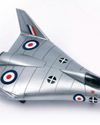
Mustard
BAC's Low Speed Research Vehicle

KOVOZAVODY PROSTEJOV (KP) 1 Was Monty's Triple'
Brian Derbyshire

SPECIAL HOBBY SAAB J-21A Review
From the late 1930s and early 1940s, with thewar in Europe raging around them andedging ever closer to its borders, the Flygvapnet had ordered Seversky P-35A aircraft, alongside Vultee Vanguards, but only sixty of the former and none of the latter were received.
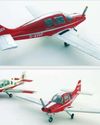
VFR MODELS Beagle B.121 Pup
This is the first 3D printed kit I have come across and it is really rather fine.

Hearts in the sky RIAT RETURNS
After a nearly three-year hiatus RIAT returned to our skies with a hot show in every sense of the word. SAM’s Mike Verier and Ray Ball were there.

Colour Conundrum
A Cancellation Conundrum - The RAF F-111s That Might Have Been Part 1

COPPER CAUDRON Caudron G.Ill in 1/32
Copper State Models have carved a name for themselves in the last few years producing high quality plastic kits of World War One subjects.
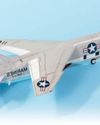
Academy RF-8A Crusader Conversion in 1/72
USMC squadron VMCJ-2 used six RF-8As during the Crisis (designation F8U-1P until September 1962), with others held in reserve, two flying out of Guantanamo Bay, and four out of NAS Key West.
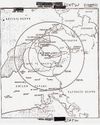
The Cuban Missile Crisis
Modelling US reconnaissance assets in 1/72 Part 2: The Nuclear Confrontation
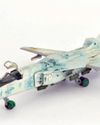
UKRAINIAT striker
The Sukhoi Su-24 is an all-weather attack aircraft capable of supersonic speeds and characterised by its side-by-side pilot/navigator seating and its variable geometry wing.